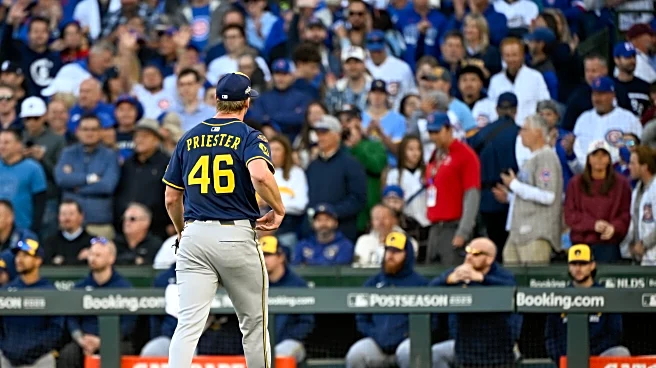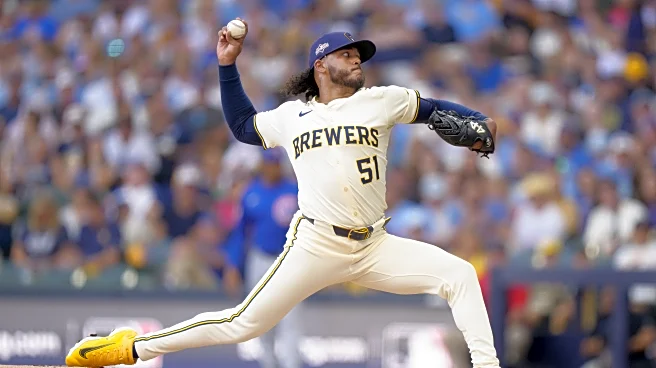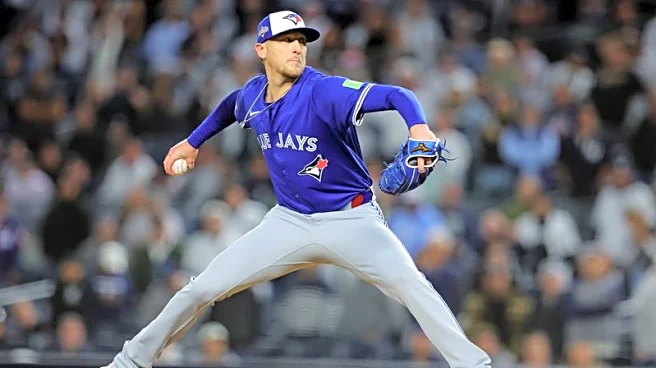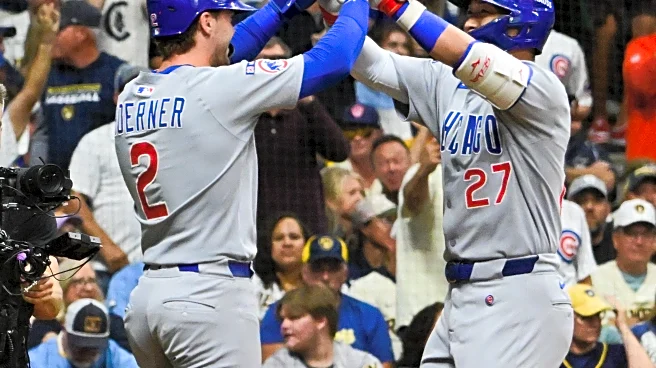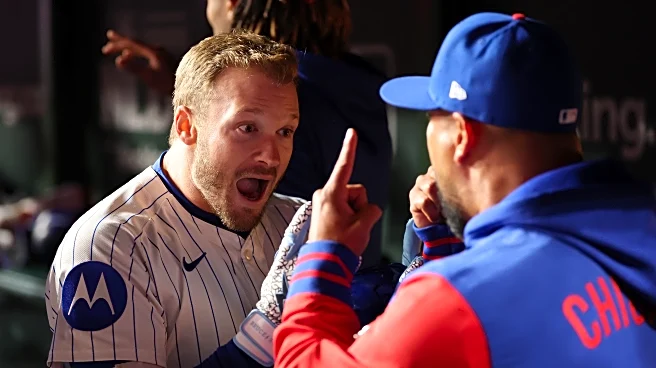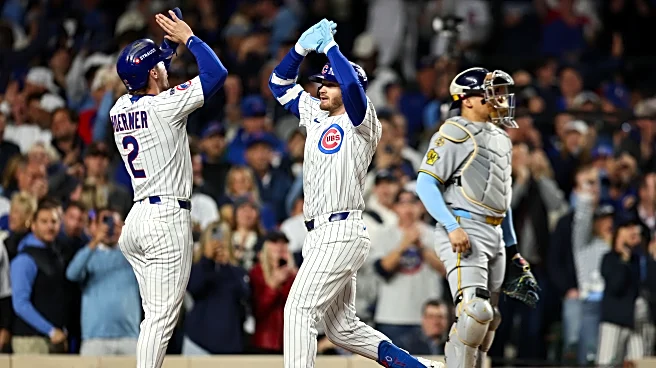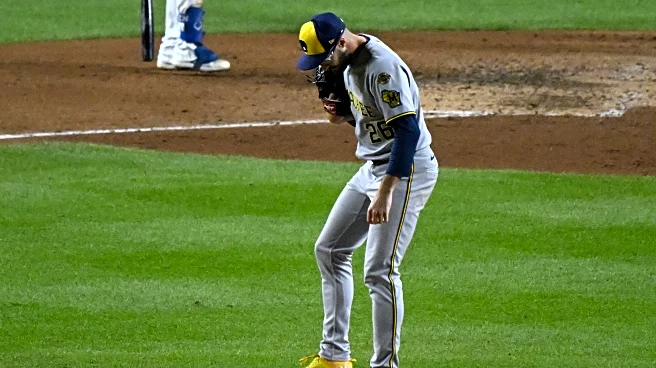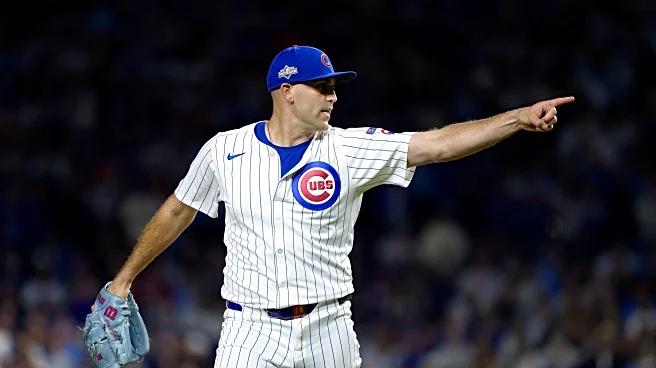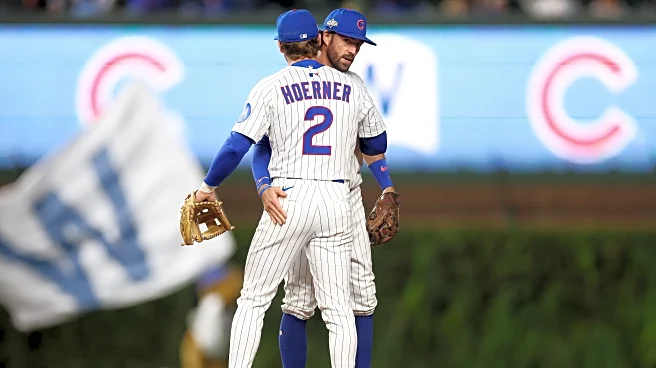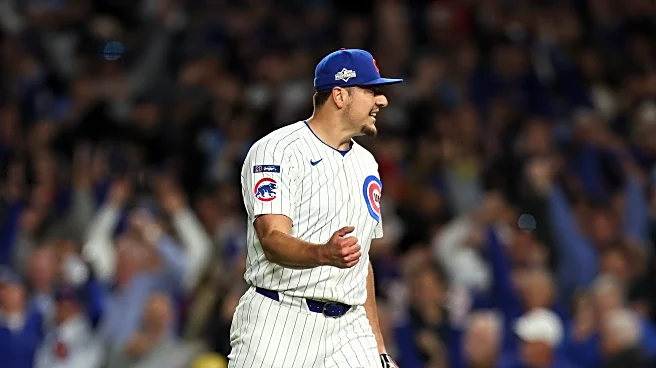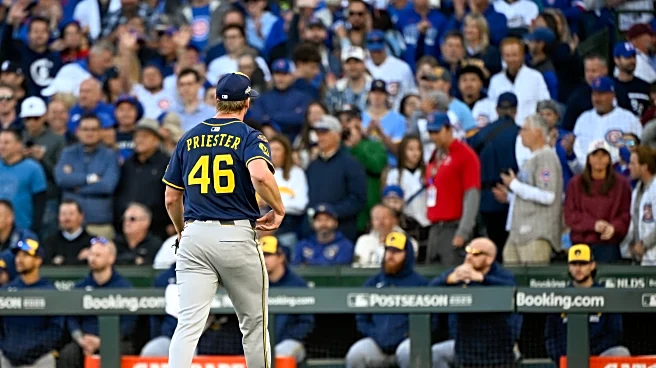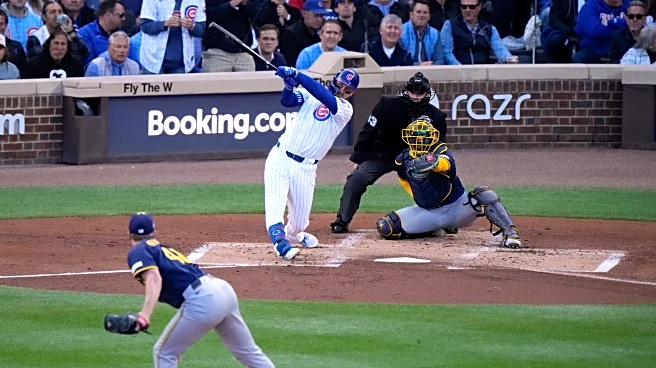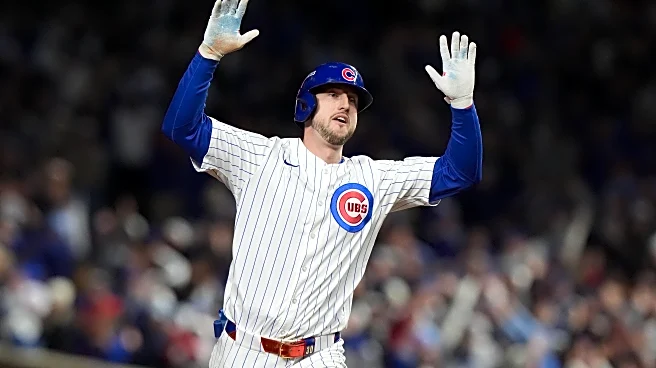Quinn Priester, acquired from the Red Sox back in April, had been a revelation for the Brewers throughout the regular season. Priester pitched to the tune of a 3.32 ERA through 29 appearances (24 starts) in the regular season. Prior to his last regular season start, Milwaukee hadn’t lost a game that he had started in over four months (19 appearances). Even in that game, he pitched fairly well.
Priester took the mound again for Game 3 of the 2025 NLDS, with a win securing the Brewers a spot in the championship
series. Well, you know how that went. For the first time all season, he couldn’t even make it out of the first inning. Priester gave up a leadoff home run to Michael Busch, but wasn’t able to stop the bleeding there. Three of the next four batters reached before he hung a slider up in the zone to Cubs centerfielder Pete Crow-Armstrong, who roped it into left-field for a two-run single.
That would be it for Priester, who went just two-thirds of an inning while striking out one. One of those outs was an impressive sliding catch by Sal Frelick to rob Seiya Suzuki of extra bases. Simply put, it was probably Priester’s worst outing with Milwaukee.
Game 5 is later tonight, and as of the publishing of this article, Brewers manager Pat Murphy hasn’t yet announced a starter. If he decides to go with a bullpen game, it’s likely that Priester will be part of the game plan, given that he only threw 39 pitches in Game 3.
So, what does Priester need to do differently to find success against the Cubs in Game 5?
Priester’s best pitch is generally his sinker, which graded out as by far his best pitch in terms of RAA (runs above average). His slider and curveball graded out as slightly above average (1.3 and 1.5 RAA), while his cutter and changeup graded out as below average. His sinker graded out at 7.8 RAA, making it one of the best in baseball by that metric. It’s no surprise, then, that Priester threw his sinker 42% of the time in the regular season. He relied even more heavily on his sinker in Game 3 — of those 39 pitches, 19 were sinkers.
Priester’s full pitch distribution against the Cubs was as follows, per Statcast:
- 19 sinkers (48.7%)
- 10 sliders (25.6%)
- 9 cutters (23%)
- 1 curveball (2.6%)
Now, compare that to his pitch distribution in the regular season:
- Sinkers: 42% (41% against LHH, 42% against RHH)
- Sliders: 27% (17% against LHH, 36% against RHH)
- Cutters: 20% (24% against LHH, 17% against RHH)
- Curveballs: 9% (15% against LHH, 5% against RHH).
Given the relatively small sample size presented in game 3, I think it’s fair to say that Priester’s game plan didn’t change much from the regular season. He still threw his sinker more than any other pitch, threw his slider and cutter about a quarter of the time, and mixed in an odd curveball. His velocity hovered around his season averages, with his sinker actually clocking in at a full mph faster (94.9) than his regular season average (93.9).
Look at how the Cubs hitters have done this season, in terms of run value created against sinkers:

And sliders:

And cutters:

These charts tell us a few things. Don’t throw a sinker to Ian Happ, don’t throw a slider to Michael Busch, and don’t throw a cutter to… well, most of the Cubs. Interestingly enough, Crow-Armstrong, Dansby Swanson, Willi Castro, and Busch all grade out as above average against cutters, while a few of the hitters in the heart of the Cubs’ order (Suzuki, Tucker, and Kelly) don’t. Perhaps the most important data point is that many of the Cubs’ best hitters (Hoerner, Suzuki, Happ, and Tucker) struggle against sliders, which Priester throws about a quarter of the time.
So, what does this tell us about Priester’s chances for success against the Cubs? If he has his best stuff and trusts the data, he should be fine. Priester only threw one slider against Suzuki, even though, per the data, Suzuki can’t hit sliders nearly as well as Priester’s other pitches. Michael Busch struggles against sinkers — his only swing and miss just so happened to be on a sinker. Nico Hoerner did beat Priester on a slider, but he didn’t hit it particularly hard — his single was a looper off the end of the bat that went right back up the middle.
The Cubs have a well-rounded offense with players who can hurt you up and down the lineup, which obviously presents a challenge. At the same time, though, the Cubs didn’t beat Priester unexpectedly. Busch didn’t hit his home run on a sinker, he hit it on a cutter. Priester really didn’t help himself by walking two batters, and he also threw a couple of bad pitches (the hanging slider to PCA, for example), but besides Hoerner, there weren’t any statistical outliers.
Busch’s home run was a cutter right down the middle, which he grades out as above average against. Pete Crow-Armstrong’s RBI single was a slider, which he grades out as above average against. Suzuki’s hard-hit lineout was a sinker, which he grades out as above average against. See where I’m going with this?
Five of the six pitches thrown to Carson Kelly were sinkers or cutters, not sliders, which — say it with me — he grades out as above average against. Kelly struck out in his only at-bat against Priester (on the only slider of the at-bat).
Again, listen to the data. Most of the Cubs’ best hitters are below average against one of Priester’s three main pitches. Priester has a great sinker, but Ian Happ against sinkers is literally the best hitter on the Cubs against any one pitch. Happ grades out poorly against sliders, so throw him sliders. Priester has to attack Happ, Hoerner, Tucker, and Suzuki with sliders and Busch with sinkers.
One of the Brewers’ strengths as an organization is identifying successful pitches and encouraging their pitchers to throw them more. Priester threw his sinker 50% of the time against the Cubs, but 30% of the time last season. Milwaukee’s “pitching lab” has probably already identified these trends, so look for Priester to throw slightly more sliders and slightly less cutters if he takes the mound in Game 5. If he mixes in the slider a little bit more against the Cubs, who struggle against sliders, while keeping them off balance with an occasional curveball or well-located cutter, he should have more success than he had in Game 3.
